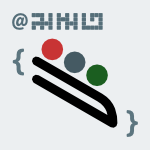Travelled to:1 × Australia
1 × Brazil
1 × Italy
1 × Switzerland
1 × The Netherlands
4 × USA
Collaborated with:Y.Yu B.Nuseibeh P.Bielkowicz R.C.Laney V.N.L.Franqueira R.Wieringa A.Tedeschi S.Supakkul T.Hill L.Chung J.C.S.d.P.Leite M.Jackson Q.Boucher A.Claßen A.Hubaux P.Heymans L.Pasquale M.Salehie L.Cavallaro A.K.Bandara B.A.Price C.B.Haley I.Omoronyia
Talks about:argument (4) requir (4) approach (3) support (2) problem (2) system (2) secur (2) risk (2) comparison (1) disclosur (1)
Person: Thein Than Tun
 DBLP: Tun:Thein_Than
DBLP: Tun:Thein_Than
Contributed to:
Wrote 10 papers:
- RE-2013-PasqualeYSCTN #adaptation #forensics
- Requirements-driven adaptive digital forensics (LP, YY, MS, LC, TTT, BN), pp. 340–341.
- RE-2012-TunBPYHON #mobile #privacy #requirements
- Privacy arguments: Analysing selective disclosure requirements for mobile applications (TTT, AKB, BAP, YY, CBH, IO, BN), pp. 131–140.
- ASE-2011-YuTN #detection #source code #specification
- Specifying and detecting meaningful changes in programs (YY, TTT, BN), pp. 273–282.
- RE-2011-FranqueiraTYWN #security
- Risk and argument: A risk-based argumentation method for practical security (VNLF, TTT, YY, RW, BN), pp. 239–248.
- RE-2011-YuTTFN #named
- OpenArgue: Supporting argumentation to evolve secure software systems (YY, TTT, AT, VNLF, BN), pp. 351–352.
- RE-2010-SupakkulHCTL #approach
- An NFR Pattern Approach to Dealing with NFRs (SS, TH, LC, TTT, JCSdPL), pp. 179–188.
- RE-2009-TunJLNY #problem #using
- Are Your Lights Off? Using Problem Frames to Diagnose System Failures (TTT, MJ, RCL, BN, YY), pp. 343–348.
- REFSQ-2009-TunYLN #approach #identification #interactive #problem
- Early Identification of Problem Interactions: A Tool-Supported Approach (TTT, YY, RCL, BN), pp. 74–88.
- SPLC-2009-TunBCHH #approach #feature model #requirements
- Relating requirements and feature configurations: a systematic approach (TTT, QB, AC, AH, PH), pp. 201–210.
- CAiSE-2001-BielkowiczT #comparison #evaluation #process #specification
- A Comparison and Evaluation of Data Requirement Specification Techniques in SSADM and the Unified Process (PB, TTT), pp. 46–59.
















